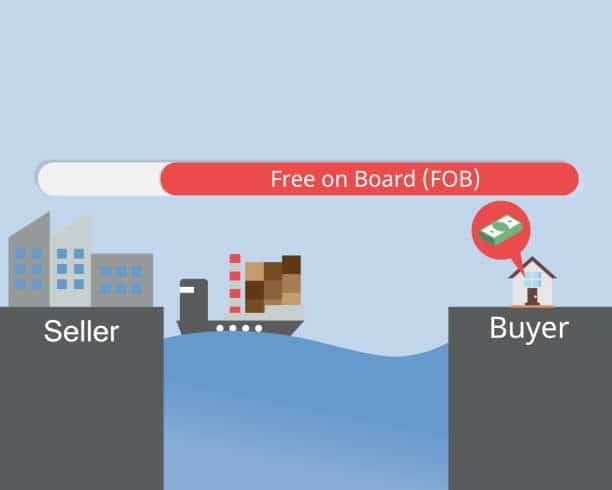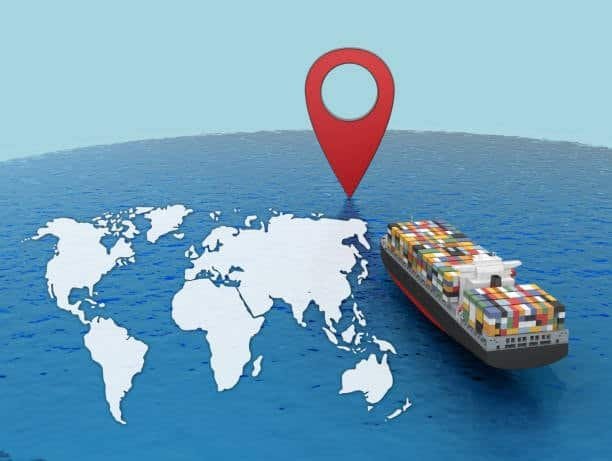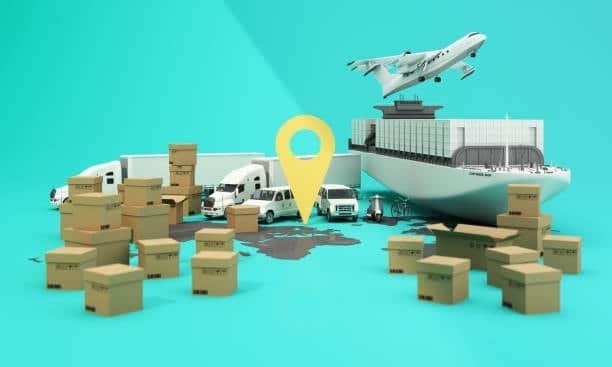Freight terminology is very important for businesses, big or small, involved in international trade and shipping, as it can greatly affect transportation costs . In shipping agreements, FOB shipping point and FOB destination are the words most often used. These explain who’s responsible for the shipment, the point of ownership change and who pays for the freight charges. This study will cover the important terms in shipping to support better business choices.
What Does FOB Mean in Shipping Terms

FOB refers to the shipping term that describes transfer between the seller’s location and the buyer of goods when ownership and liability change which is called “free on board fob” or “Freight on Board.” Although the expression started in shipping, it now involves any kind of transportation like trucking, rail and air freight. The point at which the seller stops being responsible shifts to the buyer which is specified by the FOB designation in the contract, making it a key provision in every shipping deal.
FOB terms are very important in the world of modern commerce as they directly influence transport costs . Things like insurance, accounting rules, taxes and responsibility under the law are all touched by corporate governance. Understanding these terms, including insurance costs, allows companies to avoid surprises and legal problems.
Understanding FOB Shipping Point Fundamentals

Anyone buying on FOB shipping point is responsible for the goods transfer the second they leave the seller’s premises or the designated shipping point. With this construction, the seller completes its obligation when the products are placed on the intended carrier’s vehicle or vessel, and the buyer assumes responsibility from that point . Starting from that point, the buyer is responsible for any problems that could occur such as damage, loss, theft or transportation delays.
The seller mostly avoids responsibility for damage or loss during shipping, as this is decided by the term used, which also considers the buyer’s location . After the goods are delivered to the carrier, any problems that occur are the buyer’s job to deal with. Such tasks are filing insurance documents, tracking delayed deliveries and looking after any harm the goods sustained on their way here, which the buyer pays for . Buying a product online means taking responsibility for organizing and covering the cost of getting your items to your place.
Breaking Down FOB Destination Requirements

FOB shipping point is the opposite of FOB destination in its operation. FOB destination terms mean that the seller retains ownership of the goods, including costs and possible damage, all the way to the place specified by the buyer. Ensuring that goods are delivered securely and safely is the obligation of the seller, as they will handle all risks during transportation like damage, loss or delays, until the seller ships them .
Typically, the seller covers the entire shipping process when the FOB destination is chosen such as choosing the carrier and buying insurance. Buyer becomes responsible for the goods once they are accepted at the place of delivery. It means that buyers feel more secure but it increases the seller’s responsibilities, risks during transportation, and the overall shipping cost.
Key Differences Between FOB Shipping Point and FOB Destination

These two words are distinct because one involves handing over ownership and risk and the other does not. Risk is transferred to the buyer as soon as the freight is shipped under FOB shipping point, but the seller retains risk up to and including delivery under FOB destination, which affects the fob status . This boundary changes responsibilities in areas such as paying transportation costs, including freight charges handling insurance filings and organizing transportation.
The cost is very different when comparing these two terms. Assuming the risks and costs of transportation at the FOB point enables buyers to get purchases for a lower price. Because they must pay for shipping and the risks involved, including freight costs FOB destination often has a higher price than FOB origin. The difference between what you call it can change how much money comes in and how much it costs to operate, especially for international shipments .
Legal Implications and Ownership Transfer
FOB terms have legal impact on many aspects besides just the delivery of goods. These terms establish who owns the property and when the ownership transfers, particularly when the goods arrive, which is important for matters of dispute, insurance and taxes. FOB shipping point means ownership moves to the buyer at the shipping dock, but FOB destination holds seller ownership until the goods are successfully delivered.
FOB terms are regularly used by courts in business cases concerning damaged or lost goods. If there is a written FOB in the contract, the FOB term can decide who will take charge of filing claims against carriers, insurance companies or others. Businesses need to be aware of these legal effects to look after their interests and follow the rules set by the law.
Risk Management Under Different FOB Terms

Selecting the right FOB terms should guide the strategy to handle risks. Under FOB shipping point, buyers are required to buy comprehensive insurance for goods on the way and to cooperate with trusted carriers, especially if freight prepaid options are used . They ought to add tracking solutions to follow freight transport shipments and be ready with plans for transport delays or any damage that may occur shipping costs.
FOB destination means the seller takes on the risk, checking the carrier’s dependability, getting suitable insurance, and making sure the shipping happens as planned, similar to the concept of free alongside ship. Those using FOB destination terms usually pick their trusted carriers and have strict quality regulations to prevent issues during shipping, especially since the seller retains liability freight collect.
Cost Analysis: Who Pays What Under Each FOB Term

FOB terms have a big effect on how pricing strategies are set and the amount of profit a company can make seller pays. If the FOB is at the seller’s premises, then buyers cover the full cost to transport the goods which also includes insurance and other fees, which the seller records for accounting purpos . The system means that sellers can provide less costly regular prices and buyers have the ability to pick how their items are shipped at the cost they choose fob shipping point agreement.
Under FOB, sellers need to pay all shipping fees, since these are generally part of the product’s total price. Though buyers will need to pay more upfront, the predictable costs and lack of multiple relationships should offset it. Calculating all these costs is necessary for sellers to earn a profit and still compete effectively with other businesses board shipping point.
Insurance Considerations for FOB Shipments
The insurance needed is much greater in FOB at destination contracts than in FOB at shipping point contracts. When following FOB shipping point terms, buyers are required to insure the cargo against loss or damage as it is in transit buyer’s destination. An important part of this job is knowing the available coverages, claim procedures and deductibles for any type of shipment and transport method in use, which the buyer records for their accounting .
Usually, sellers hold insurance on their goods covered by FOB destination until delivery is done. At the same time, buyers have to confirm that they will be protected under the coverage and check for any points in the policy that may not include their shipments free carrier. Even if FOB terms mention that insurance will be dealt with by the buyer, some businesses decide to keep their own coverage for easy filing of claims and smooth coverage.
Impact on Inventory Management and Accounting
How goods are shipped and invoiced greatly determines the way inventories are managed and accounts are handled. They must recognize the inventory and record it as soon as the shipment is made, with FOB shipping point international chamber. As a result, inventory turnover can change, cash flow has to be managed correctly and adjustments may be needed in financial records.
Because of FOB destination, buyers can wait to confirm their inventory until the products are actually delivered and recognized by them. This way of handling supply chain helps to manage cash flow more efficiently and makes it less complicated to monitor goods that are being transported buyer’s loading dock. Yet, sellers are responsible for keeping track of goods that have shipped but are still on their way and this may make their inventory management more complicated shipping agreement.
Choosing the Right FOB Term for Your Business
The right FOB term will depend on things such as the firm’s size, how much it ships, the areas it operates in and its attitude toward risks. Because handling international shipping and customs rules can be tricky, businesses that are new to shipping might opt for FOB destination. Better-equipped logistics teams in large businesses tend to pick FOB shipping point to make sure they control the shipping expense and choose their carrier shipping vessel.
Industry ways of operating and what customers expect can affect which FOB term is used. Some industries have agreed-upon standards that clarify which term to use and certain customers prefer particular FOB terms as part of what they need when purchasing international commercial terms. Businesses have to adjust these external factors with what they can do internally and what they aim for strategically.
International Trade and FOB Terms
Because of customs, currency problems and different laws, FOB terms are more involved in international commerce. In international trade, FOB shipping point makes it the buyer’s responsibility to deal with customs clearance, pay import duties and meet the rules of the destination country. They would need to have advanced knowledge of importing and exporting which may lead to more challenges and costs delivery vehicle.
FOB destination involves sellers needing to understand customs requirements and take charge of making sure imported goods meet the rules. It makes things simpler for buyers, but sellers need to be very knowledgeable about trading rules globally and may find it challenging to serve certain countries well.
Documentation Requirements for Each FOB Type
It is very important to have proper documents for both FOB shipping point and FOB destination arrangements. Buyers normally have to handle bills of lading, shipping receipts and all documents needed for customs when using a FOB shipping point, which also includes calculating their shipping costs . Buyers should confirm they get all required documents so they can track shipments and use them to file insurance claims if wanted.
FOB destination requires the seller to ensure there is documentation and to track the shipping process. Buyers should still review the delivery papers and make sure they get the goods. Having clear rules for documenting transactions keeps conflicts away and makes business relations easier to handle.
Common Mistakes to Avoid with FOB Terms
Confusion and disputes are often the result of businesses not being clear on FOB terms in their contracts. There is often also confusion about the insurance effects of various FOB terms which can leave people without proper insurance and open to financial shocks.
Many companies struggle to match their internal processes with the FOB terms they pick. Businesses choosing FOB shipping point may not be well-prepared to monitor shipments or sort out transportation related issues. Just like with CIF, companies on the FOB side may forget to include shipped goods that are still in transit when preparing statements.
Technology Solutions for FOB Management
Many effective tools for FOB administration are now available because of technological progress. A transportation management system enables firms to follow shipments, see the rates offered by carriers and manage documentation regardless of FOB terms. Many accounting programs work with these systems to simplify both keeping track of stock and handling reports.
By using electronic data interchange, communication among traders and carriers is enhanced, meaning the paperwork is reduced and accuracy increases. With the help of real-time trackers, businesses are alerted about any issues and can respond more quickly. Information on cloud-based logistics platforms makes it easier for different parties to team up and handle shipping tasks together.
Future Trends in FOB Shipping Terms
The shipping industry keeps getting better due to the introduction of new technology and new ways of doing business. FOB terms management will likely undergo a revolution thanks to blockchain which maintains unalterable transaction records for every step in the shipping process. Many aspects of FOB arrangements could be handled by smart contracts, limiting disagreements and making things more efficient.
Because businesses want to reduce their environmental impact, FOB terms are being shaped to account for this. Certain companies are selecting FOB terms that enable them to pick carriers that practice green transportation practices, including options for carriage paid . Businesses might have to change how they calculate transportation emissions under different FOB arrangements because of sustainability reporting requirements.
Best Practices for FOB Implementation
Everyone involved in the transaction should clearly discuss FOB terms for the system to be successful. FOB terms and the rules for each party, including when the buyer assumes ownership, should be clearly set out in the contract. Repeated training for employees engaged in shipping and purchasing guarantees that FOB guidelines are used at all times. Choosing the best carriers for FOB shipping can make freight services better and cut down on costs, ensuring timely delivery to the final destination. Frequently checking FOB term results helps companies discover areas to fix and change their strategy as needed. Tracking shipping information from past deals helps make better future choices.
Conclusion
People in business need to understand the differences between FOB shipping point and FOB destination. The decision about which term to use affects charges, plans for managing risks, kinds of insurance and business operations. Assessing their needs, skills and goals helps companies pick FOB terms that help their success and maintain good relationships with the people they trade with. Given the changes in international trade, it is still very important for businesses to know about FOB terms and their effects.

